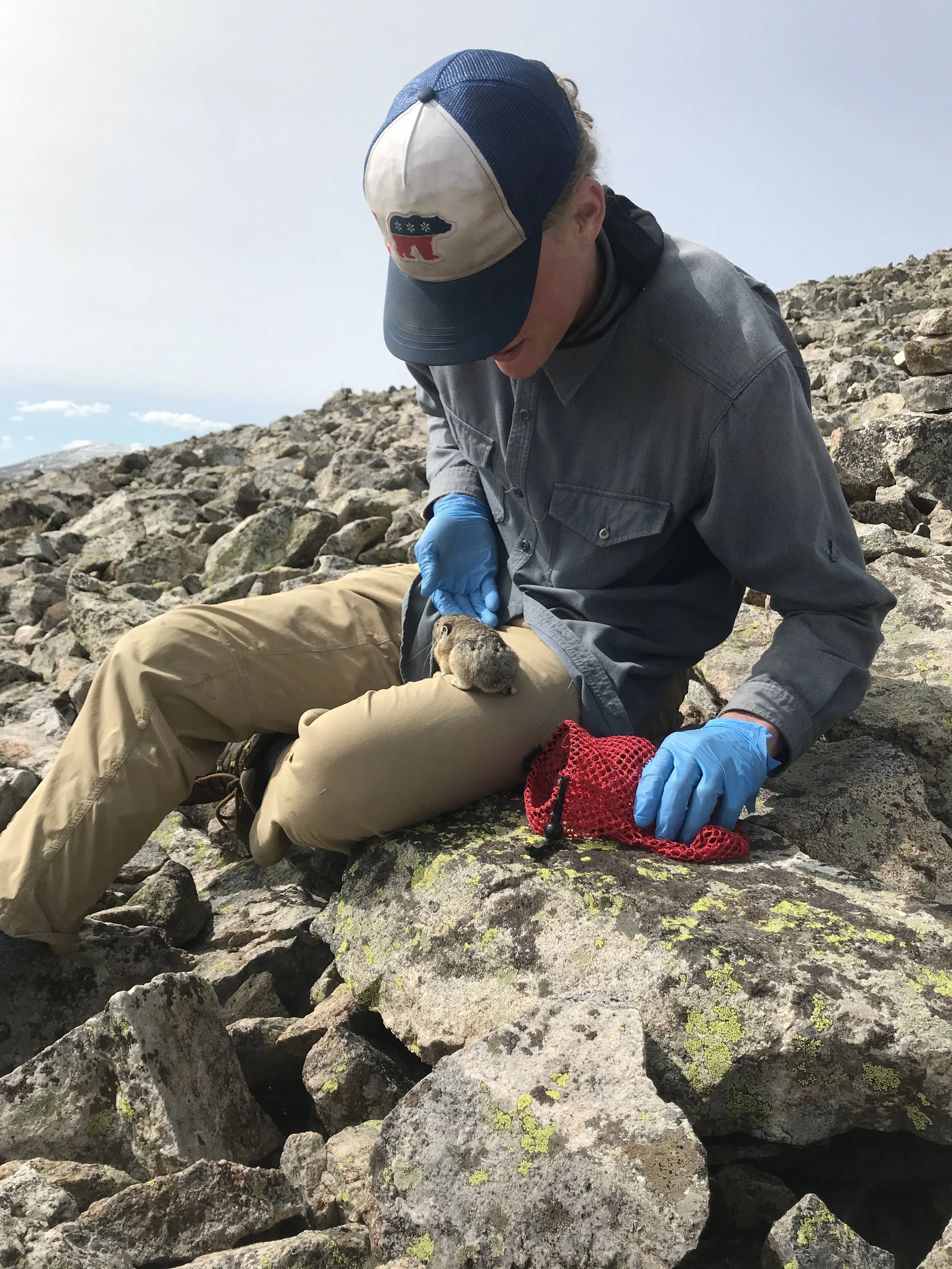Niwot research unveils the juxtaposition of beauty and toxicity in warming subalpine wetlands.
A subalpine wetland on Niwot Ridge. Photo by Jesse Rush.
A subalpine wetland on Niwot Ridge can be stunningly beautiful on a crisp fall day, its golden vegetation framed by dark evergreens and snow-dusted peaks. And yet, recent research out of the Environmental Biogeochemistry Group at CU Boulder reveals a darker side to this beauty: warming high-elevation wetlands may be producing a potent neurotoxin, methylmercury.
In recent work published in Environmental Research Letters and highlighted in The Conversation, Dr. Eve Hickley and colleagues reveal their discovery of methylmercury in subalpine wetlands and discuss the possibility that climate change may ramp up production of this neurotoxic substance. Surprised and fascinated by this work, I grabbed an opportunity to ask Eve some questions:
Clifford Adamchak, now a PhD student with Eve Hinckley, sampling pika hairs as part of his honors thesis research on mercury cycling on Niwot Ridge. Photo by Hannah Miller.
I’m familiar with nature’s juxtaposition of beauty and toxicity in Rocky Mountain organisms— baneberry, larkspur, and death camas come to mind— but learning that beauty and danger mix at the ecosystem level in subalpine wetlands was a shock! How did you get into studying this in the first place?
I woke up at 3am and thought, "I wonder if methylmercury is making it into the pika at Niwot Ridge." My musings in the wee hours usually don't make for the best science questions, but in this case, evidence for high mercury deposition in the alpine provided a reason to look into it. Two undergraduates at the time, Clifford Adamchak (now a Ph.D. student with me) and Phil Thornton, began honors theses to measure movement of methylmercury into the terrestrial and aquatic food webs at Niwot Ridge.
Wow. It’s amazing how our brains work, causing good ideas to materialize when we least expect them. How would you summarize what has happened since your pre-dawn musings and work by Clifford and Phil?
Our mercury research has expanded dramatically after my initial motivation to study it. Hannah Miller recently defended her Ph.D. on mercury flows in the Western U.S., with a lot of data collected at Niwot Ridge. She has provided one of the first comprehensive mercury studies in alpine regions. Clifford Adamchak has followed up on Hannah’s research by studying the effects of beaver ponds in mountainous areas on methylmercury production. His research has shown that the wetted, vegetated margins of beaver ponds are the areas of the river corridor most conducive to methylmercury production, not the beaver ponds themselves. I'm very excited about this research!
It is indeed exciting, albeit a bit concerning! Your piece in The Conversation made me wonder about the lakes of the Green Lakes Valley. Has your group detected rising levels of methylmercury in the Green Lakes and/or the cutthroat trout that live in the lakes?
Yes, we have! Phil Thornton found elevated levels of methylmercury in the trout and reported them in his undergraduate honors thesis. Hannah Miller, who is now a postdoc at Oregon State University, included these data in her analysis of the food webs at Niwot, and showed accumulation from the zooplankton to the fish to weasels that feed on fish (and other food sources).
The Green Lakes Valley is within the City of Boulder watershed, and you mention in The Conversation that contamination by methylmercury could threaten drinking water supply along the Colorado Front Range. Is there evidence that methylmercury from Niwot Ridge or other nearby subalpine wetlands has made it into the Front Range Water supply?
We do not have evidence that methylmercury is contaminating the Front Range Water supply. This is an area that needs study, and we haven't yet pursued it.
It sounds as though there is a lot more to learn, with potential implications for so many of us here on the Front Range. I look forward to seeing what you and your group discover next!
Thanks, Anne Marie.
Dr. Eve Hinckley is a co-PI of the Niwot Ridge LTER and an associate professor in the Department of Ecology and Evolutionary Biology at the University of Colorado, Boulder. You can learn more about Dr. Hinckley and the research coming out of the Environmental Biochemistry Group on her website, ebgscience.org.





